#note taking tips
Explore tagged Tumblr posts
Note
WE MISS UUUU so excited for ur return 💕
also how do u take ur online notes? i need a format badly because my digital notes are SO messy 😭
so like, how do u do your titles, subheadings, bullet points, etc
AHH I MISS YALL TOOO 💕
for my digital notes i take them on my notion. so it honestly depends what im taking notes on. if im taking notes on a LECTURE i'll structure it with one big heading (title of my notes) a couple (3-4) subtitles which are the main topics that my professor touched on and under those 3-4 i'll take my notes, this way i can categorize them efficiently. i also make sure to highlight and use different colors for different words to make things stand out.

towards the end of my notes i'll ask chat gpt to generate questions based on my notes so that i can study from it easily
now if im taking notes on a TEXTBOOK i'll structure it like this. the headings of my notes will be the chapters/subheadings of the textbook, i won't copy and paste directly from my textbook cuz its just too wordy and i dont even need alladat. i'll rephrase it instead. and i'll make the key words bolded. lastly, at the end of each section i'll just make sure that i can summarize.
lemme know if you want an example if ur more of a visual person but i hope this made sense for you 🗒️💗 HAPPY NOTE TAKING GIRLIE
#pink academia#honeytonedhottie⭐️#advice#ask honey#ask🎀#elle woods#beauty and brains#note taking#note taking tips
25 notes
·
View notes
Note
I saw your answer about study tips! Thank you so much<3 but would u mind giving some tips on note taking during lectures? I always just end up floundering on how to take notes, how to keep up with the professor while taking said notes, etc?
Okay so there is a few things to keep in mind while taking lecture notes like: do you HAVE to take notes while the lecturer is teaching? or is listening enough for you?
I usually take lecture notes for two reasons: 1. I zone out if I just listen, so scribbling down some notes helps me feel grounded and focused. And also I can review them after going home and also refer to the text if I missed anything- and then convert it into study-able notes.
Another thing I keep in mind is that my lecture notes do not have to be neat and organized. Being decipherable is enough. For example:

If you see this, it's not really neat or "aesthetic" or organized - its just info dumped into a page. I scribble along with the lecturer, and write wherever possible and connect the information with arrows because that is how my brain views information. Through connecting different information. So this really helps me visualize the concept and understand what's going on.
So your lecture notes don't really have to be understandable to others, as long as you know what you're writing down, you're good to go!
(also using different colors is optional. I have three colored pens with me always, and i switch between them to seperate information. Since its dumped everywhere, using different colors helps me read and understand it better. And switching pens take like two seconds maximum for me, so I'm able to keep up with the lecturer too!)
#askfox#studyblr#feel free to ask me anything!#codeblr#studyspo#study inspo#note taking#notes#study tips#note taking tips#study motivation#student#uni life#comp sci#compblr#computer science
14 notes
·
View notes
Text
gentle reminder you can rise up from everything. you can recreate yourself. nothing is permanent. you are not stuck. you have choices. you can think new thoughts. you can learn something new. you can create new habits. all that matters is that you decide today and never look back.
#college#education#school#academia#note taking#student#study aesthetic#study blog#study inspiration#study motivation#study notes#study tips#studyblr#studyinspo#studyspo#uni life#university life#university#academic validation#chaotic academia#light academia#dark academia#motivation#motivating quotes#motivational quotes
27K notes
·
View notes
Text
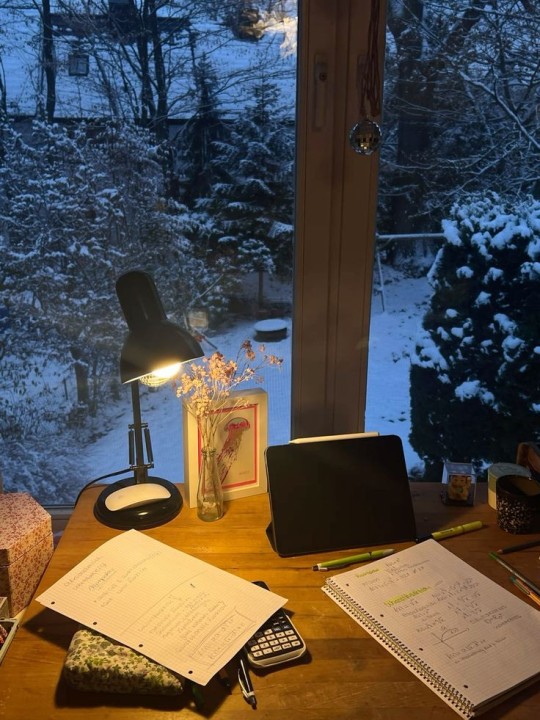
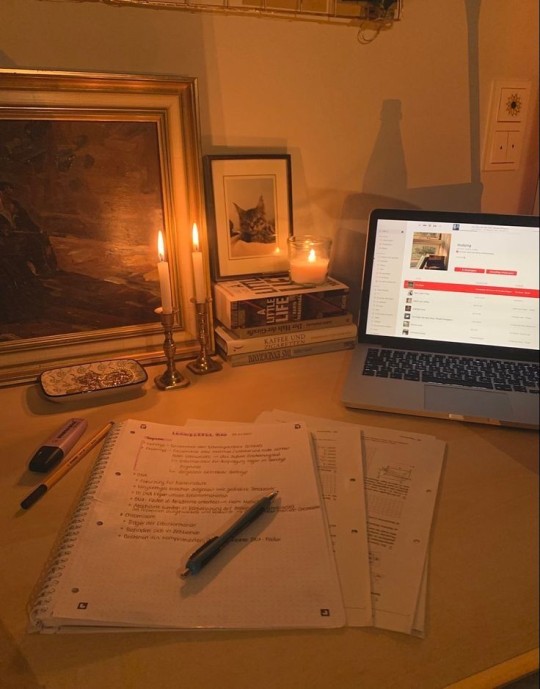
I will succeed. Not instantly. But definitely.
#study motivation#studyblr#girl blogger#quotes#study inspiration#studyspo#studying#study inspo#study blog#study goals#study motivator#student#study movitation#harsh studyspo#study aesthetic#studyblr community#college#education#school#note taking#study notes#study tips#studyinspo#study life#university life#university#chaotic academia#dark academia#light academia#motivation
3K notes
·
View notes
Text
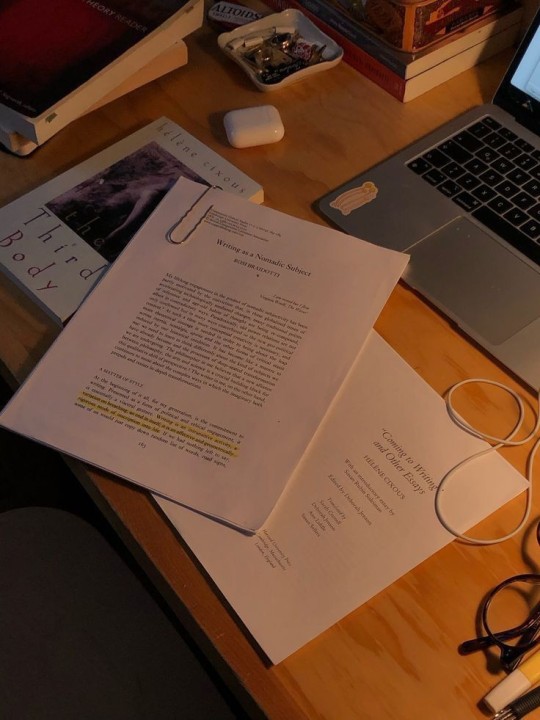
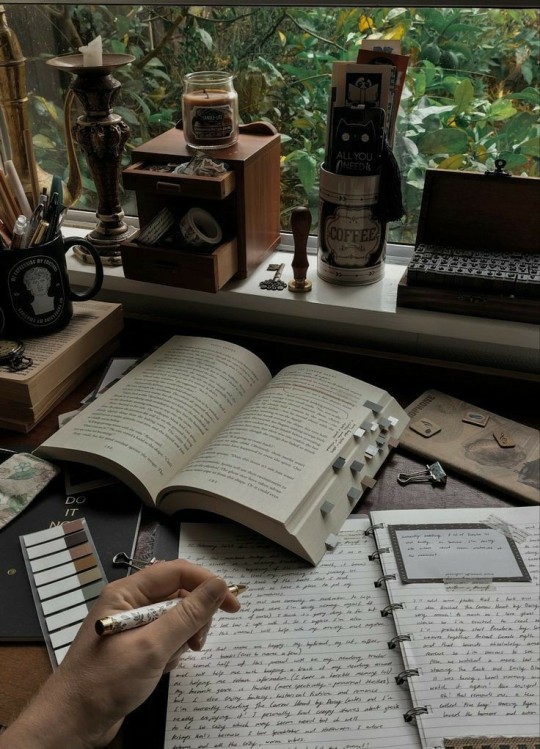
I will succeed. Not immediately. But definitely.
#study motivation#studyblr#quotes#study inspiration#studyspo#studying#study blog#study goals#study motivator#student#harsh studyspo#study aesthetic#studyblr community#bella_studies#college#education#school#academia#note taking#study notes#study tips#studyinspo#uni life#university life#university#academic validation#chaotic academia#light academia#dark academia#motivation
6K notes
·
View notes
Text
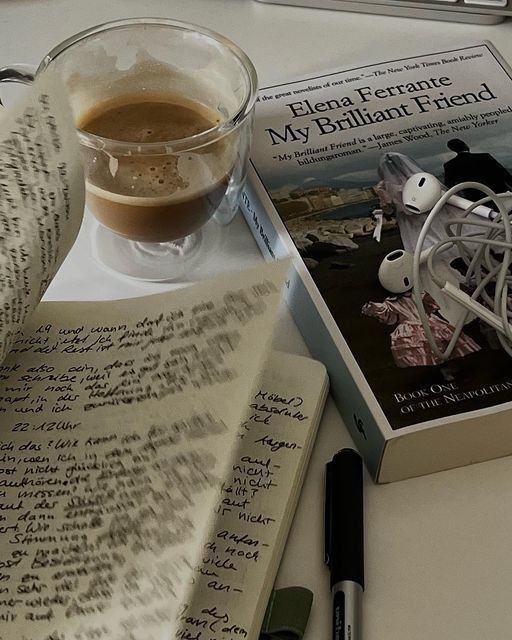
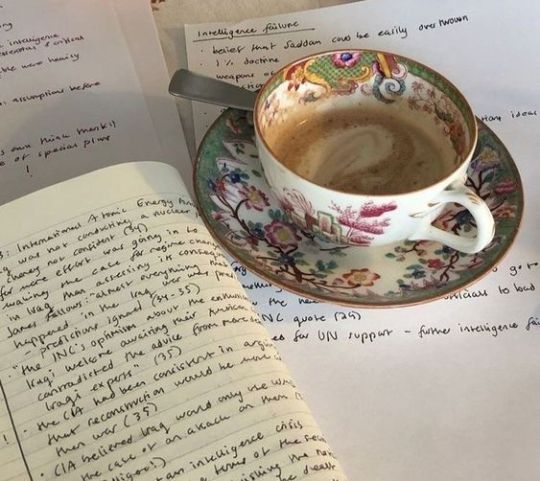
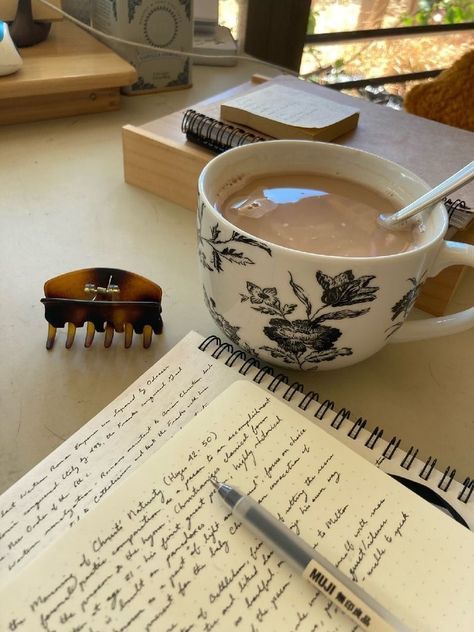
Grab your coffee, and just start.
#school#academia#student#study aesthetic#study blog#study inspiration#study motivation#note taking#study space#study tips#student life#studying#academia aesthetic#light acadamia aesthetic#study community#study notes#studyblr#studyblr community#studyinspo#classic academia#studyspo#uni student#uni life#college student#academic overachiever#light academia#dark academia#academic validation#chaotic academia#productivity
660 notes
·
View notes
Text

Don’t forget! 💕
#positivelypresent#self love#love yourself#don’t forget#take care of yourself#self care tips#self care reminder#reminder#note to self
162 notes
·
View notes
Text
how I take notes on non fiction books
I recently made a post on my study method, and decided to make a whole separate post on my note taking method. The structure of the notes I write doesn't vary too much from my lecture notes to things I might have to read. A couple of useful informations you might want to know before I start actually talking about note writing is that I am mainly focused on studying history (tho I have had other humanities exams in my degrees), and that I study for oral exams in which the material is mainly composed of non fiction books, but sometimes include articles as well as lecture notes. Somehow I have also failed to mention that I am speaking about HANDWRITTEN NOTES. I only do handwritten notes, I don't work well digitally, so keep that in mind. And with this being said brace yourselves for a very long post. The bullet points I will be making are not really in a specific order and I will be including a few pictures too.
The first step when I am working on the materials for an exam is to figure out in which order I will be reading (and writing notes) the books. This hasn't really much to do with the notes themselves, but it's important to know which of your materials is more general and what other things go more in depth, so that you don't struggle too much while studying. Another plan related thing I always do is to write down each chapter of the book I have to study on my bullet journal and how many pages it is so I can plan my studying more comfortably. If the chapters are very long, and divided in subchapters I sometimes also write those down.
The goal of the notes I write is to fully take the place of the book, so they tend to be very detailed and long. I do this because the very act of writing is part of my study method, and working on things I have written down in my own words is just much better for the type of learner I am. So basically I read the book only once, then it goes back on the shelf and I work exclusively on the notes. This means my notes need to be detailed and well organized.
My method is to read a chapter, underlining important stuff as I am reading, and then right after I am done reading I work on the notes for that chapter before moving onto the next. I do this because it makes the note writing more effortless, I am fresh with informations I just read and I basically just need to skim over what I have underlined.
On underlining, since it is so important. I underline everything I will be including in my notes, it might seem much as sometimes it consists of full paragraphs, instead of key words. But this is okay because my notes I don't just copy and paste.
To create useful notes you need to be re-elaborating the informations. You need to read, understand what you read, and be able to write it down using your own words. That way the notes will be easier to review, they will often be composed of shorter sentences, and by doing so you are also actively making writing part of your studying and not just a mindless activity.
Personally I don't work well with full pages summaries, I need the text to be visually broken into sentences/small paragraphs, and I use a lot of symbols as well as abbreviations.
Symbols and abbreviations are in a way part of your very own language when you are writing notes, you tend to develop these with time, but they are so useful. I personally use different types of arrows, all caps words, position of the text in the page, different methods of highlighting and abbreviations (usually for words that come up often like country names, for example Italy becomes ita, France becomes fr, etc.).
Your notes need to be useful for you, they don't have to necessarily be comprehensible for another person (which means you can and will fuck up sentence structure because sometimes skipping a couple of words makes the notes shorter and still understandable), and they do not have to be pretty. They should be as tidy as possible, but again that might change from person to person, I have some very messy looking notes that make total sense to me. With time you'll learn what works best for you.
I have a visual memory so as I mentioned titles, highlighters, all caps, the placement on the page and other similar things are very important in my notes. I cannot fully exapain some of these things because some definitely only make sense to me in the moment (like the words I choose to write in all caps, or the way I highlight things).
I like to have a clear chapter and subchapter break (so that in case I need to refer back to the book it's super effortless). I like to write those with a red pen, usually the chapter title is in all caps and the subchapter in coursive, but it really depends.
I use only two highlighters in each set of notes yellow for dates, and the colour I associate with the book/the subject of the book (I have synesthesia I don't make the rules when it comes to colours). This of course might change depending your preferences and on the element of your notes you want to focus on. I like to have spacific colour for dates and time periods, because of course while studying history that is a fundamental element. If you are focusing on other subjects you might want to have a specific colour for names, or other elements.
I like to leave a big side margin to add either key words (especially in lecture notes since they might be messier and jump around informations more often), or additional information in a second time (sometimes it happens, after you read another book, or attended a particular lecture you have to add a couple of sentences and I rather have a blank space that never gets used rather than no space at all for emergencies).
I honestly mentioned everything that came to mind right away, but since note writing is now basically a mindless skill I have been practicing for years I surely forgot about something. I might end up adding to this post in the future or write another one. My note-writing method has also changed a lot thought the years from high school to university, it's a skill I have been perfecting for the past decade. This to say that depending on what you are working on things might change, and by experimenting with different things you might find out things that work very well for you. If you have any questions on specific things I didn't mention or that wen't clear my inbox is always open and I am more than happy to help.
Since this post is already very very long I am adding the pictures below the cut
Example of a page of notes before and after highlighting
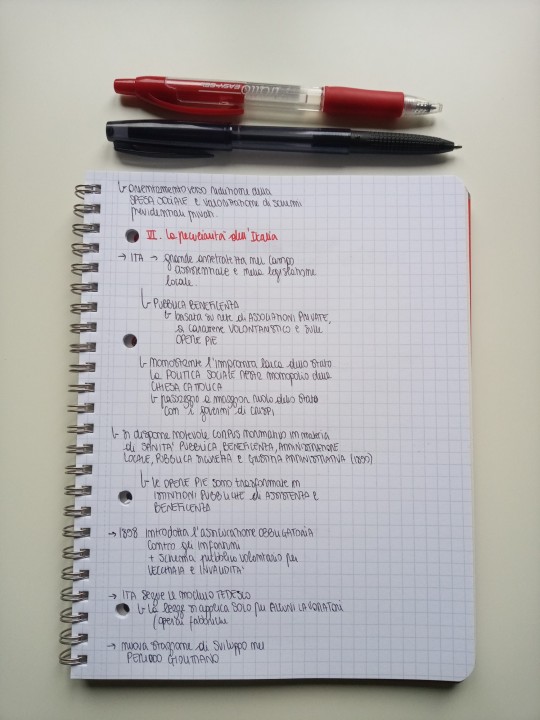
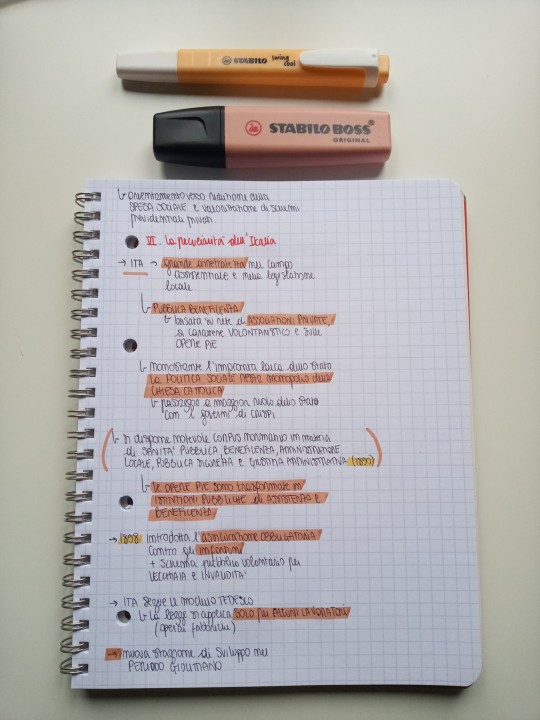
Example of symbols and structure of the notes and the way I highlight things (in which you'll hopefully be able to understand my handwriting, and in which there might be some spelling errors but alas that often happens in my real notes as well so if there are any it's for the sake of accuracy lmao). If I end up adding informations on the margins I always use a pen of a different color so I can tell which informations I got from what source (ex. main notes from lecture, colorful notes from additional article).
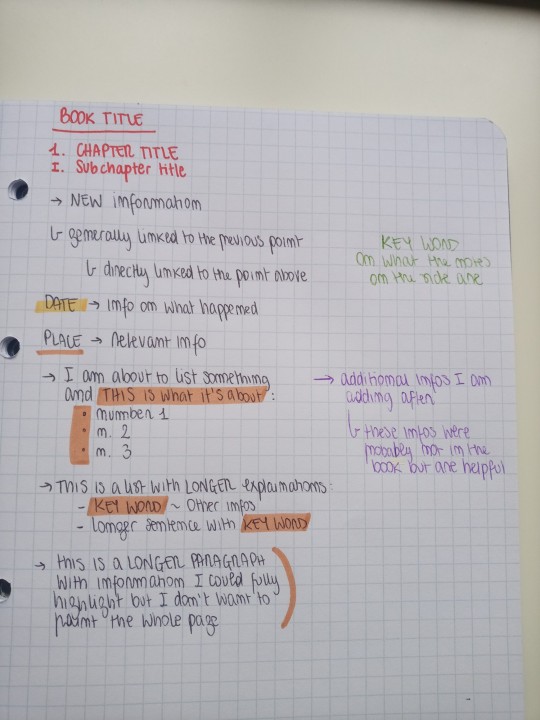
Example of messier notes in which the main text in black are the notes I took during lectures and the additional colorful text was added while writing the materials (I rarely do this, it usually happens when the lectures follow a book precisely, which happens when we have to study books or summaries written by the professor). As you can see I often use post it notes to add more writing space, and sometime I even use them to create visually separated sections. If I end up adding some drawings I also usually like to have them on post it notes so they stand out more (and if you are wondering why the hell would an history student need drawings it's usually either because I need a map or a region/state to mark things out, or when studying for archaeology exams I often needed visual references, for example to identify different types of vases or decorations).
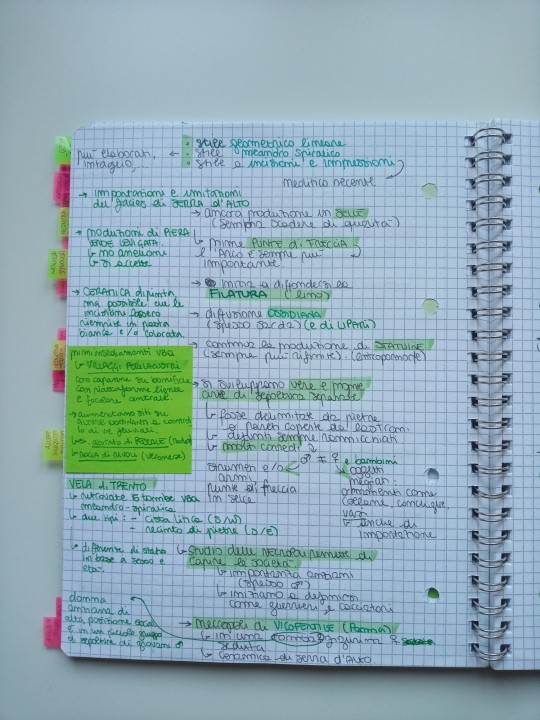
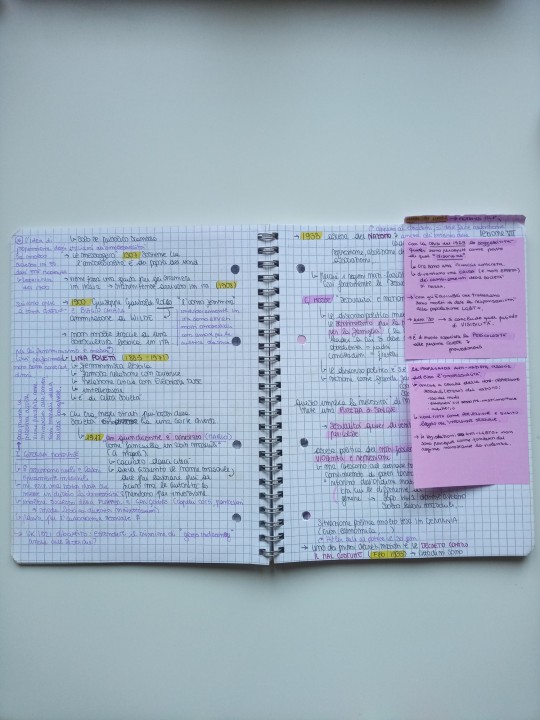
#this should be it#i was hoping on a more structured post but it was harder than i expected to write#both because so much of note writing is now a brainless activity for me and also bc it's really not easy to exaplain certain aspects#like the symbols i use#i really did my best and hope it will be useful#then again if y'all have questions the inbox is open and i will try my best to answer whatever your heart desires#studyblr#studyinspo#studying#study tips#study advice#note taking#hadwritten notes#my note taking method#how to take notes#non fiction books#academia#uniblr#university#booklr#study method#mine#the---hermit
235 notes
·
View notes
Text
semester success. ᥫ᭡
[ 3 chapter mini series ] | chapter one
in this series, i’m going to teach you all my helpful tips and tricks on how to succeed in the new semester in just 3 quick chapters! get ready to take notes, we’re diving right in!
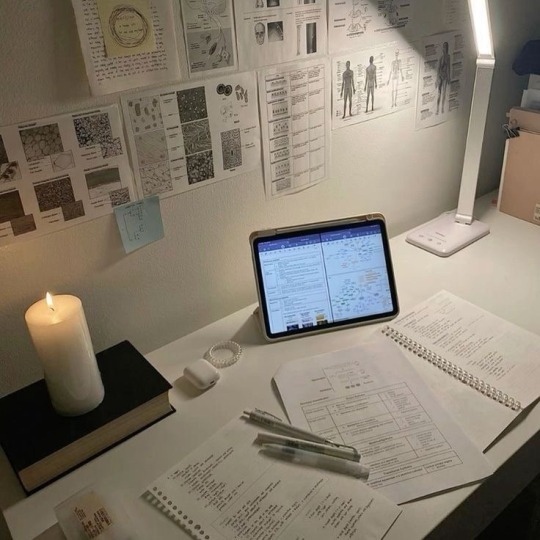

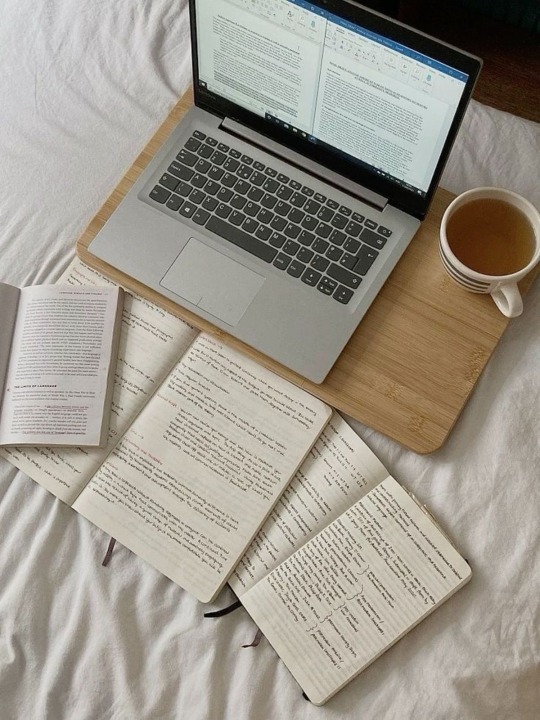
chapter two — MASTERING NOTE-TAKING
in the last chapter, we talked about the first week and how to prepare for it! now, we’re going to get real into it and talk about one of the most important skills that can help increase your level of success throughout the semester: taking notes.
class is in session …
୨ৎ — physical or digital
let’s first decide how we’re going to take notes. if you’re the classic/traditional type, a notebook & some pens/pencils & highlighters are the way to go! but if you’re feeling a bit more modernized, grab your laptop and/or tablet!
i personally use my ipad to take notes! i know lots of people who use Notion, create digital documents for their notes, utilize GoodNotes/Notably, and i use this app called CollaNote (more on this later)! if you’re note-taking digitally, find an app or format that works best for you! you can play around with the different apps and tools on your device! digital note-taking also allows for more creativity, in my opinion, but i’ve seen loads of students get really creative with traditional styled notes!
digital note-taking inspo:
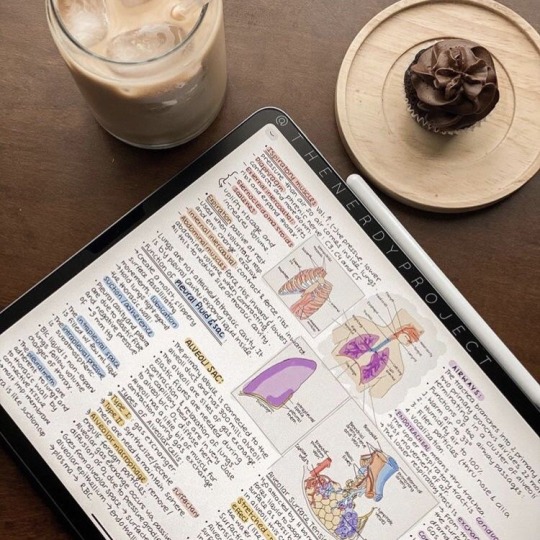
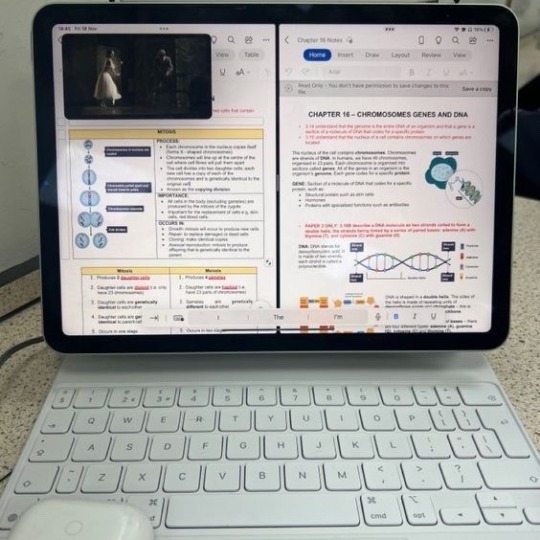
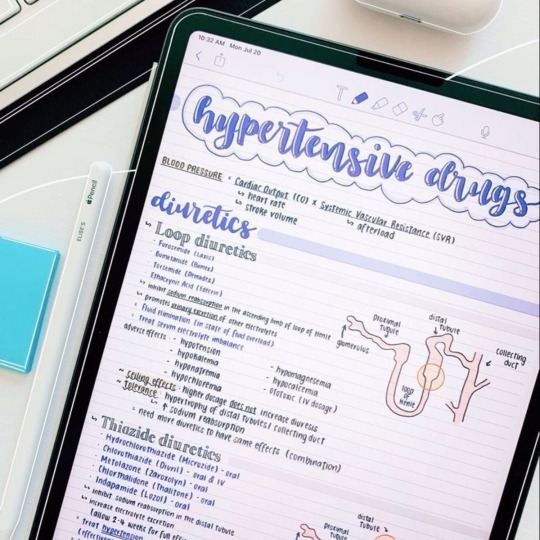
i highly recommend this post by @glowettee if you want a quick, but detailed list of how to get set up for digital note-taking!
physical note-taking inspo:
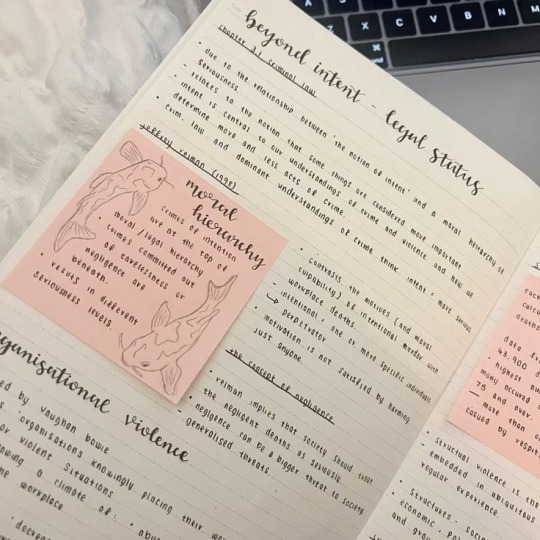
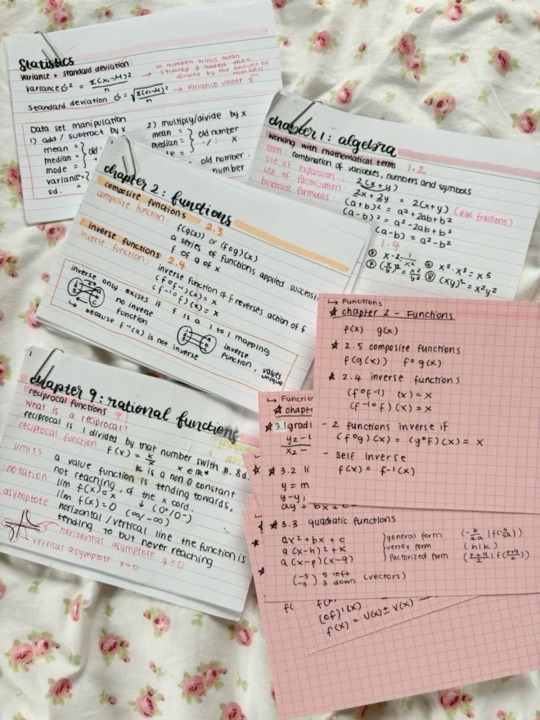
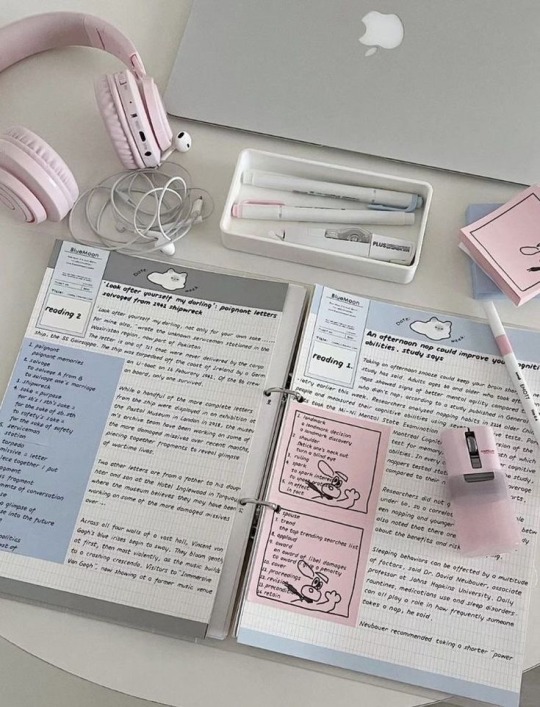
୨ৎ — note-taking methods
there’s lots of ways to take notes! that’s the beauty of note-taking, there’s no one right way of doing so or any wrong way of doing so! there’s a variety of ways to take notes, so find and play around with what works best for you!
different methods:
quick notes - the unaesthetic version
you’ll see lots of people say that they rewrite their notes, and i’m one of those people! i typically don’t take notes during lectures (mainly because my ADD doesn’t allow me to lol) but when i’m actually able to take some notes, my in-class writing is just plain bullet points and words scrambled onto my page.
i see “quick notes” as a way of making sure you get all the key points from the lecture without the stress of writing everything else down.
here’s how:
don’t focus on writing every single thing down! this will make you lose track of what the professor might be saying in addition to what’s in the textbook/lecture slides.
focus on the key points! keep an ear out for your professor and if they say something like “this will be on the exam” or “this is really important to know”. those are the things that need to be written down!
remember: you can always go back and rewrite your notes! having just the key points written down will help you 1. stay focused during class and 2. be prepared for what to focus on during your studies.
don’t worry about your notes looking bland or messy, again, you can go back and rewrite your notes to make it look nice and add additional information! this “quick notes” method is for people who are like me and struggle with taking notes during lectures!
** tina’s tip: record the lecture! if you’re able to have your phone out or if your computer/tablet has a recording feature, use it to record the lecture so that when you do go back to rewrite your notes you don’t forget any other important points!
mind-mapping - an organized flow chart
how it works:
start with your central idea or main topic you want to focus on! have this be the center of your mind-map.
when info regarding this topic starts to come up, write them down and connect that additional information with the central idea using lines and arrows.
get creative! use different colors and add images or symbols!
mind-maps are a great way to organize and visualize the information you need to do into a creative diagram! this is a great method for those visual learners!
boxing method - compartmentalizing notes
this method is another great one for visual learners as it allows you to create a chart for yourself and all that you’re learning in class!
how it works:
start by dividing up your page so that you have different boxes set out for you!
include headings/titles for each box and have them relate to each topic you’re learning.
in those boxes, write down key points from each topic and include any and all information as you can!
you can also connect the boxes with lines and arrows to see how all that information flows together and relates to one another!
i suggest going onto @nenelonomh ‘s blog and reviewing her study corner where there’s a section dedicated to different note-taking methods! as well as other helpful academic advice!
୨ৎ — record your lectures
i mentioned this earlier, but i just want to reiterate this point! recording lectures will help you so much with note-taking as it allows you to go back to what was said in class and continue taking notes that way. it’s extremely helpful especially when your teacher/professor is a fast talker and you can’t keep up with note-taking in class!
୨ৎ — color coding
an easy way to make your notes more appealing to you is by color coding everything! feel free to pick your favorite colors and use those!
what to color code:
key points
important vocab/terms
connecting topics
additional notes from your teacher/professor
୨ৎ — CollaNote
i promise this is entirely unsponsored, but i do love this app! it’s completely free (with in-app purchases if you want to unlock other templates)!
it comes with a variety of free tools, pen styles, highlighters, colors for those writing tools (which are also entirely customizable!), page templates, recording feature, and so much more that i can’t fully remember off the top of my head!
it also allows you to organize everything into folders which is really, really nice! organization of your notes is also super important when it comes to note-taking! so let’s get into organization!
୨ৎ — note organization
if you’re taking notes in the traditional way, make sure you have designated notebooks for each class. if you’re using a binder that includes all of your classes, make sure you have those divider tabs to prevent from any of your notes integrating with your other ones!
for digital notes, make sure you have folders or an organized list of links for each of your courses! it’s important that your files are titled accordingly so that there’s less confusion when you need to go back to any of your notes!
going back to note-taking methods, make sure when you’re writing your notes that you stay consistent with your organization!
write your topics in chronological order
create sections for different bits of information
color code
you don’t want your notes to be a jumbled mess! not having some kind of organization system can lead to confusion while studying or unclear information on the topics you’re learning.
before you’re dismissed …
note-taking, as i mentioned at the beginning, is one of the most important skills to have while in school. you want to make sure you have effective notes that will help you understand the material and help you study for upcoming quizzes/exams! just imagine yourself as the main character in a show or movie and think of yourself as this studious and amazing person while taking notes and sitting through lectures! romanticize your academic career!
with lots of love, faustina 🌷
#milkoomis#girlblogger#girlblogging#it girl#that girl#becoming that girl#becoming her#it girl tips#studyblr#study tips#study productivity#study movitation#note taking#study notes#school tips#school motivation#light academia#dark academia#academia aesthetic#academic motivation#self improvement tips#self improvement
264 notes
·
View notes
Text

Who will deal the most damage?
#poorly drawn mdzs#mdzs#lan wangji#yu ziyuan#poll#Please note this is not a 'who would win in a battle if they fought each other'.#This is a 'who would be the scariest person to see on the other side of fighting ring.'#Yu Ziyuan knows how to do the bend and snap (a spine).#Lan Wangji has 20+ years of biting and scratching stored in his bones.#I missed the opportunity to give YZY sandals in pd-MDZS so I could properly say 'Yu Ziyuan con la chancla'.#However she's most likely wielding a heeled designer shoes. Steel tipped in the front and back.#As always there will be a follow up to the results of this poll. Who knows what that will be!#(I did make a 'bloodied up' version - but I didn't like it as much. Take this version as them *just before* they start the bloodshed.)#I'll post the alt on my twitter later on. For the fun!
486 notes
·
View notes
Note
AUGGHHAAA i just scrolled thru like your entire blog just looking at flug...... i have been in love with him for like. seven years now??? and i just. GGRGRRERURGHRG YOUR FLUG ART IS SO PERFECT I'M SO OBSESSED
7 years??? like me?? omg I hear that rarely nowadays, another fandom dinosaur!!
Thank you, I'm happy I can provide
we spontaneously decided to renovate the apartment bc this entire household has unmedicated ADHD so I can't offer you anything more than this pixel art attempt (I didn't even try ngl there's no elbow grease put into this attempt)

I would just love to make a little side scroller game in this style but unfortunately I have zero to no intelligence when it comes to technology
#it's impressive that I was ever able to figure out CSP#but it should be noted that it took me 6 years#I'm trying to get the 20th paperhatober prompt done too bc it's been a while so there will be content soon#villainous#villanos#dr flug#flug#kenning flugslys#vilanesco#my art#ask reply#on a side note my ask box is a little chaotic rn bc someone spammed the fuck out of 2 oddly specific requests#I'll assume it's all the same person#every few days#tip: I won't draw your request if you ask more than once bc I interpret this as pressure and intrusion#I receive everything.#it can just take 1-2 years legitimately
138 notes
·
View notes
Note
Hiii can u make a post on study tips and and just like having a healthy relationship with school/ studying?? Thanks !! X
Hii! sure, hope this helps <3
The Golden Guide to... having a better relationship with school!
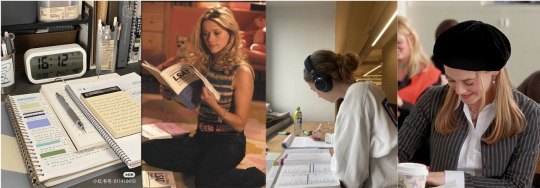
Shift your mindset
Replace "I have to" with "I get to"
There are so many kids in the world who don't have the opportunity to go to school or even the resources to study in general; it is something that we are privileged to have access to. We are so lucky that we get to go to school, it isn't a burden, its a blessing.
Instead of "Ugh I have have to go to school", think "Yay, get to go to school!"
Instead of "I have to study" think "I get to study"
This uses a phycological concept called "intrinsic VS extrinsic motivation", which explains how people are more inclined to do things that they think is a privilege to do rather than an obligation.So if you start thinking going to school and getting to study is a privilege, you would have a better relationship with it and feel more motivated at the same time!
Set realistic goals
Aim for progress, not perfection
Lets say you got 70% on your math test and you want to bump up your grades. Instead of setting a goal of scoring 95%, aim to get anywhere between 75 and 80%
This is much more realistic and achievable If you aimed for a 95%, it would be highly unlikely for you to achieve in a short period of time + if you didn't reach it, you would have felt bad and your self confidence could lower. You may end up convincing yourself that you are simply bad at school, when in reality, the goal just wasn't achievable. On the other hand, if you aimed for 75-80%, the chance of you scoring that would be very high + seeing that grade on that paper would make you feel like you can do better and your confidence in that subject and your abilities would increase.
Stay organised, but not overwhelmed
Keep yourself on track, but don't overwhelm yourself with to many things
Prioritise tasks
If you have 3 tasks, one which you know you'll spend a lot of time doing + two which would take a short amount of time to complete, do the small tasks first.
This makes sure that you wont get too carried away doing the big task, leaving you with a short and stress inducing amount of time left to do the short ones.If you first do the small tasks, it wont take you too long, leaving you with a good amount of time & an easy time limit to complete the bigger project!
Use a calendar
Use a calendar to mark the start and due dates of your assignments & the dates of any exams or events
Study Techniques
Use past papers
Just search up "*subject* *topic* *grade/year level* *curriculum* past papers"
e.g. Biology human body IGCSE past papers
2. Pomodoro technique
Study for 25 mins, then take a 5 min break (you can change how long you want to study for and how long you want the breaks to be)
There are pomodoro timers online
3. Active recall
This is good for memorising
Instead of only reading your notes, actively test yourself by recalling information from memory
4. Blurting method
Write down everything you remember, then check your notes and see what you've missed.
5. Feynman technique
Teach the topic as if you were explaining it to a five year old.
6. Spaced repetition
Review your information at increasing intervals
E.g. Review your information on day 1, then day 3, then day 7, etc
my tips!
Make note taking fun by using different colours/types of pens
I like using a cute highlighter/marker, a coloured pen and a black pen (but I use a pencil too for math)
Play around with the formatting, until you find one that works best for you - you can do this in class when your taking notes on different topics & pick which one you like best! Don't stress on aesthetics, just go with the flow and do what feels right
This makes note taking much more fun & aesthetically pleasing so your also more inclined to read them
2. Use post its or a small note book to write down your homework
When your teacher is giving you your homework in class, write it down so that you don't forget and check on it when you come back home so you know what work you get to do!
3. Use save my exams to revise and study for your assessments
It's extremely helpful as it has videos, notes and exam questions
It's free (but if you don't have premium, you don't exam questions and you can only read up to 5 notes a week)
It is based on your grade/year level and curriculum
Premium is very affordable - like $5 a month
I hope this helps yall!
xoxo,
The Girl In Gold
#studying#study aesthetic#study blog#school#study tips#self help#mindset#how to study#notes#study notes#note taking#goals#that girl#it girl#pintrest girl#academic weapon#thegirlingold✨
62 notes
·
View notes
Text
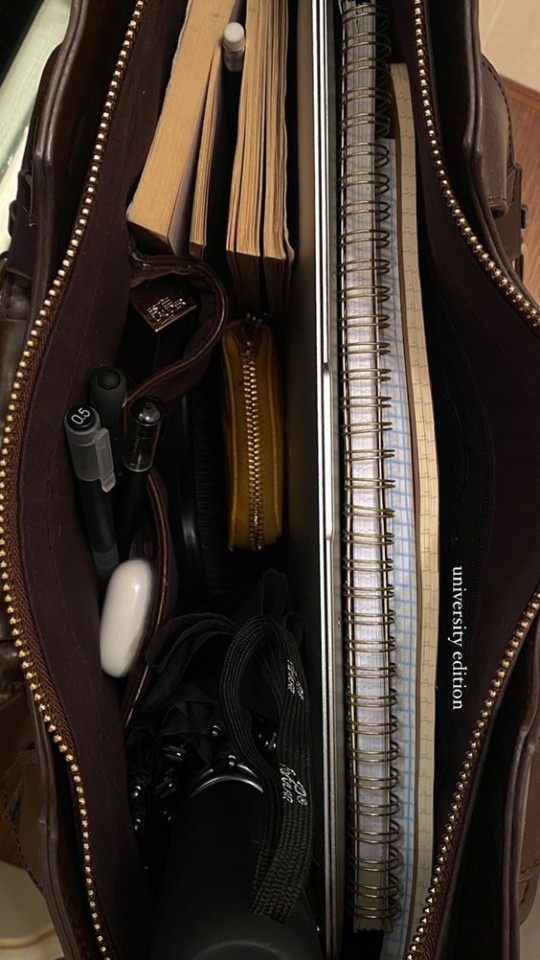
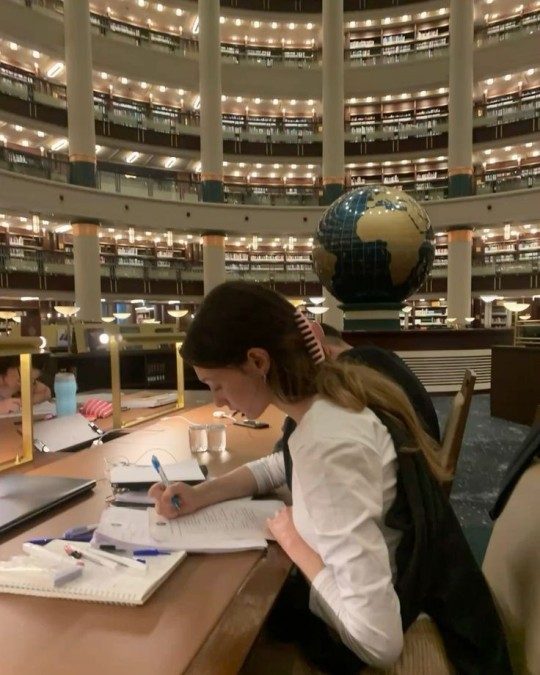
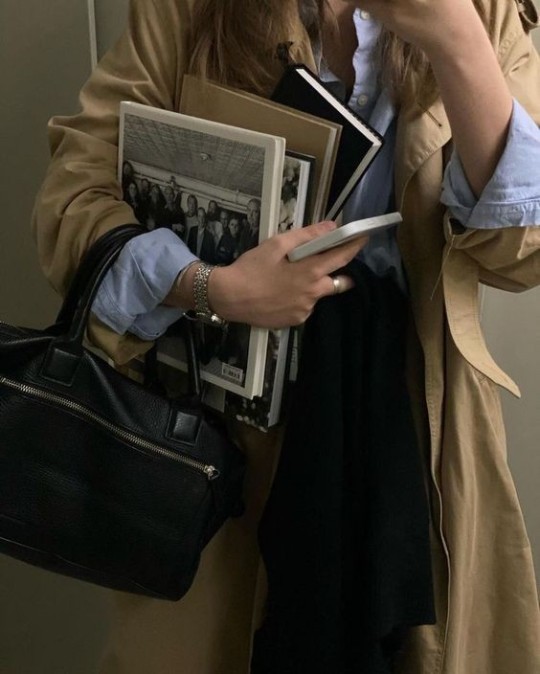
it gets easier. everyday, it gets a little easier, but you gotta do it everyday. that's the hard part. but i promise it gets easier.
#college#education#school#academia#student#study aesthetic#study blog#study inspiration#study motivation#note taking#i should study#college student#student life#studying#study community#study notes#study space#study tips#studyblr#studyblr community#studyinspo#studyspo#uni student#university life#uni life#university#light academia#academic overachiever#dark academia#academic validation
3K notes
·
View notes
Text
Active Reading

Active reading - reading with a purpose.
When it comes to critical analysis, the purpose of active reading is to familiarize yourself with your primary text and secondary sources to create a thorough and accurate analysis.
You can engage in active reading by paying attention to the type, author, audience, and purpose of a source.
Type
In writing, texts are often categorized based on the form, style, and purpose they share.
Examples: Fiction, nonfiction, horror, fantasy, and mystery.
Each type of writing typically follows a set of rules that can help us better understand the author’s purpose and the meaning of the text itself.
When reading your text, consider how the type of text shapes your understanding of it by asking the following questions:
What type of text is it (e.g., essay, play, comedy, romance, etc.)? Keep in mind that a text may have more than one type.
What stylistic or literary elements are important to that type of text (e.g., imagery, rhyme scheme, dialogue, etc.)?
How does the type of text impact the author’s message? Is that type of text appropriate for the author’s purpose?
Does the author use any stylistic or literary elements uncommon to that type of text?
How does the type of text enhance or take away from the author’s message?
Author
Authors are the people who created a text.
An author’s personal experiences often impact the type and content of his or her work.
Researching an author’s background helps us recognize and understand what influenced his or her work.
As you read through a text, ask yourself the following:
Who created the text?
When did the author create the text?
Where did the author create the text?
In what context was the primary text written (e.g., social, cultural, political, economic)?
Are there any significant events in the author’s life that may have influenced the type and content of the text?
Audience
The audience consists of anyone who reads a text.
Usually, an author considers his or her intended audience when making decisions about a source’s type, tone, and content.
When reading a source, think about how the audience shapes the author’s decisions by asking questions such as:
Who is the intended audience of the source (e.g., artists, scientists, nobles, etc.)?
How does the audience view the author (e.g., credible, biased, etc.)?
How would the audience react to the content of the source (e.g., agree, disagree, indifference, etc.)? Why would the audience react that way?
Are there any other audiences the author may not have considered?
Purpose
Purpose is an author’s reason for writing a text.
3 of the most common examples of purpose include to persuade, to inform, and to entertain.
Identifying an author’s purpose for writing is useful for determining whether an author’s text is written effectively or not.
As you read your sources, consider whether the author accomplishes his or her purpose by asking a few questions:
1. Why did the author write the text (e.g., to inform, to persuade, to entertain, to critique, etc.)? (Note: An author may have multiple purposes for writing.)
2. What is the main idea, theme, or argument of the source?
3. How does the author attempt to accomplish his or her purpose?
How does the author use ethos, logos, and/or pathos?
How does the author use literary or stylistic elements (e.g., character, symbolism, setting, etc.)?
4. Does the author effectively accomplish his or her purpose? Why or why not?
Additional Tips on Active Reading
It’s also useful to read your text from different perspectives.
The first time, read as a consumer. You are reading for enjoyment.
The second time, read as an academic. You are reading to learn and understand.
The third time, read as a critic. You are reading to question both the text’s meaning and the author’s decisions.
NOTE
It’s a good idea to take notes and record your thoughts throughout your active reading process.
Actively reading your sources helps you consider them from more than one perspective.
Active reading also fosters critical thinking.
Once you finish actively reading your sources, you can begin drafting your critical analysis.
Source ⚜ Writing Notes & References
#writing notes#critical analysis#critical thinking#writeblr#spilled ink#dark academia#light academia#studyblr#writers on tumblr#poets on tumblr#literature#writing prompt#poetry#creative writing#writing motivation#writing tips#writing advice#note taking#active reading#reading#booklr#bookblr#writing reference#writing resources
126 notes
·
View notes
Text
How To Study For Longer Hours
These are some of my tips that I used for studying for longer hours during my junior and senior year in high school. I generally studied 4 heavy content subjects and 2 languages. And, yes, i did get good grades.


Studying is a task that requires you to be consistent and driven. That is why, I want to make one thing very clear. This is not a promotion of toxic studying when you feel too tired.
I will start with a simple process that i formed.
Work => Compensation => Repeat.
Quality Matters
By quality I mean. One hour spending time recalling facts and answering questions and filling gaps is better than 5 hours of reviewing notes. Just focus on improving your focus and methods. I call it the "FM Method"
You choose one specific method, and you consistently follow it for a specific period.
Longer Hours Should Not Exceed 5
If you have to study for long hours, don't let it exceed 5 hours. The reason is simple. It's useless, and your body will drain up and use all your energy. I used to study for 9 hours some days in my junior year. Now i study only for 3-4 hours every day. The results? Practically the same. My grades didn't drop but i feel more motivated to study and complete everything.
So, don't extend the hours you study. Make your focus and methods better.
20 Second Breaks
When you complete a topic, small or big. Just close your eyes for 20-30 seconds and lean back on your chair and calm your breathing. Process the information. Let everything sink in. Take out the tension. DO NOT TAKE YOUR PHONE. And then after those 20-30 seconds, just glance through the topic before moving to the next one. So, take 20 second breaks.
Active Studying > Passive Studying
This is the same thing i spoke before. Use active methods of studying. Active recall and filling gaps, visual representation, learning through stories and mnemonics.
Passive studying is when you learn through notes, repeating things over and over again, trying to memorize instead of learning and understanding the concepts.
One hour of active studying is better than 5 hours of passive studying.
Rewards
When you complete an hour or two, give yourself a small reward. But the reward should be as productive as your time spent. If you spent the last two hours studying and then you watch 3 hours of your favourite tv show then that is not a good reward.
A reward should actually compensate, you need you calm your brain, not indulge yourself in instant dopamine hits.
Actual Rest
A reward is different from rest.
Rest is essential for your body. Sleep is the body's soother. You used your brain for hours and if you don't let it rest than definitely it doesn't matter how well you're actually studying. You. Will. Feel. Tired.
Burnout Effect
In one way, burnout is good. Honestly, some people's highest point is 30 mins or an hour. They find burnout creeping in after some time had passed. And that is why, if you want to reach at least two hours of studying. You need to push that limit. Every single time. Try moving 30 mins every week. Your max limit is 1 hour. Then this week, study for 1 hr 30 mins. The next week, study for 2hrs. then 2hr 30 mins. Do it for a few weeks.
If you don't push yourself to the max limit. Then you'll never actually reach your goal.
Consistency
This is an indefinite rule. You want to improve your grades. Do it every day.
Your work ethic and your willingness to stick to habits will determine your success.
Make a "Your" Environment.
This is a very underrated thing; you must have a "you" environment. It doesn't matter what it is. Basically a "you" environment is whenever you're there, you're motivated to do work. It doesn't have to be a place really. Another example would be, whenever i'm on my phone, i'm likely to waste my time doing unnecessary things but whenever i'm on my laptop, i'm automatically in "work" mode. So, for you it might be your study desk or even school sometimes.
(I remember, during the last 2 months in senior year, i used to go to the very corner of my classroom, sit on the ground, face the wall, put my headphones on, placed my bag in front of me as a table and just solve accountancy sums because that place was my "work" environment. Honestly, it looked so weird but whenever i was there, my focus was just amazing)
Additional Posts That Might Be Helpful:
Study Trick That No One Told Me How To Use Previous Year Papers Tips To Understand Complex Topics Small Things To Get Additional Points In Exams Questioning Method
Hope This Helps!! :)
#study motivation#studyblr#quotes#study inspiration#studyspo#studying#study blog#study goals#study motivator#student#harsh studyspo#study aesthetic#studyblr community#bella_studies#college#education#school#academia#note taking#study notes#study tips#studyinspo#uni life#university life#university#academic validation#chaotic academia#light academia#dark academia#motivation
300 notes
·
View notes
Text



Dying now, to thrive later.
#school#academia#student#study aesthetic#study blog#study inspiration#study motivation#note taking#study space#study tips#student life#studying#academia aesthetic#light acadamia aesthetic#study community#study notes#studyblr#studyblr community#studyinspo#classic academia#studyspo#uni student#uni life#college student#academic overachiever#light academia#dark academia#academic validation#chaotic academia#productivity
164 notes
·
View notes